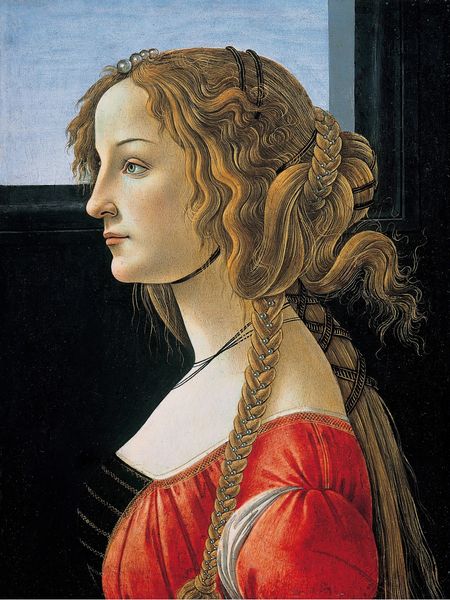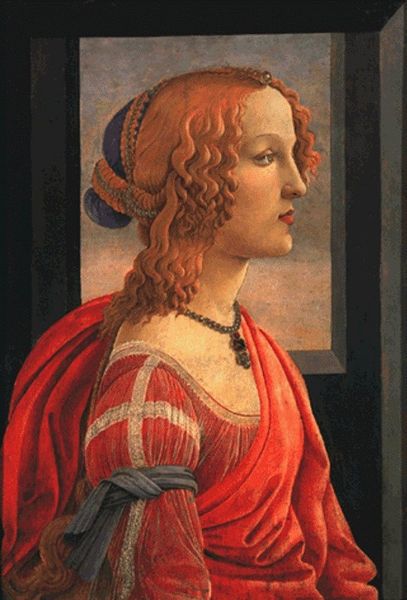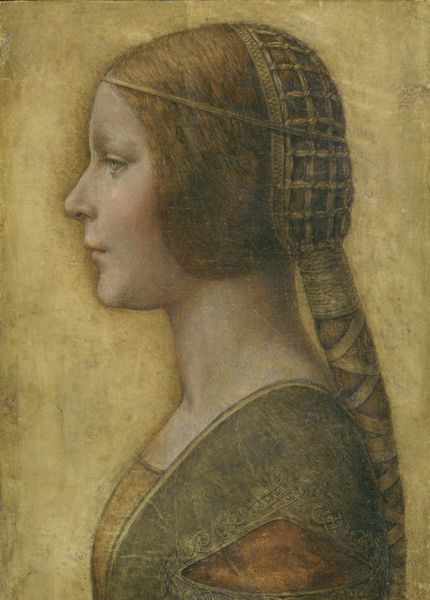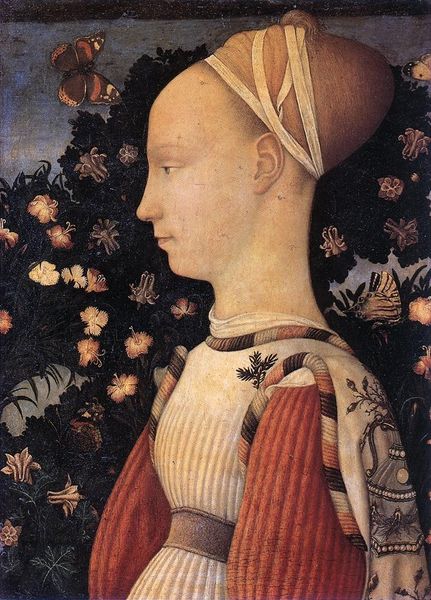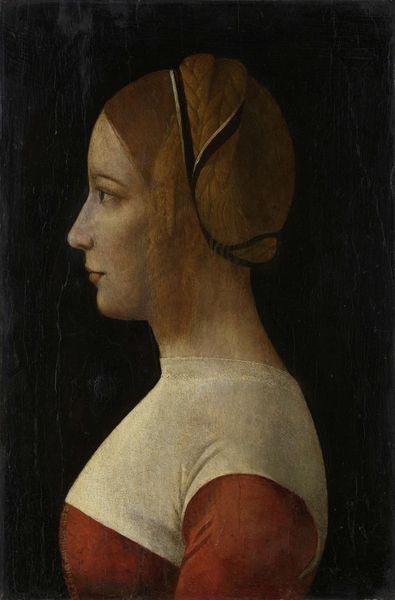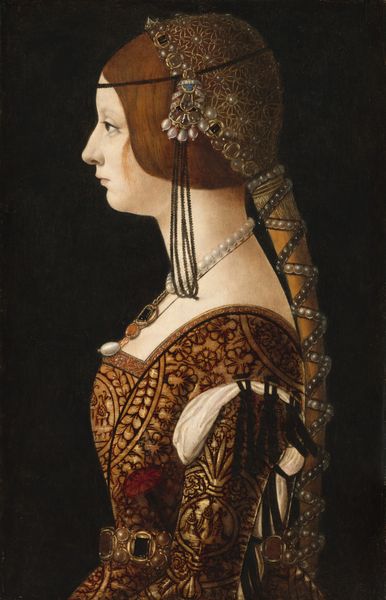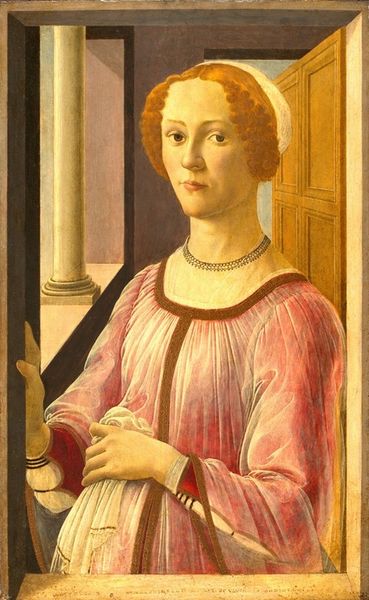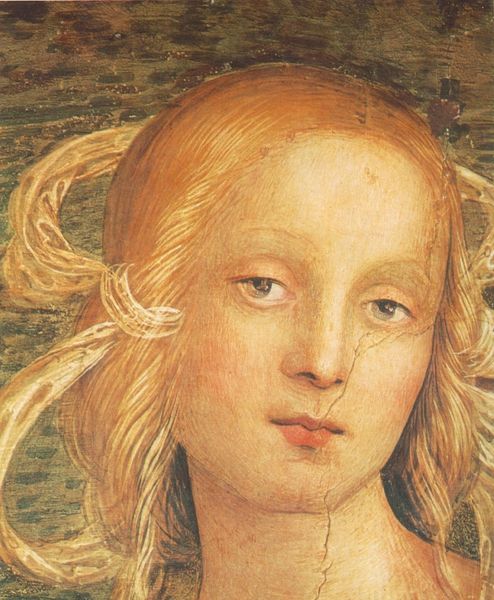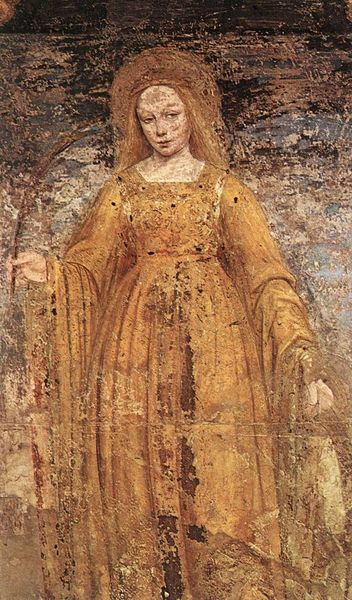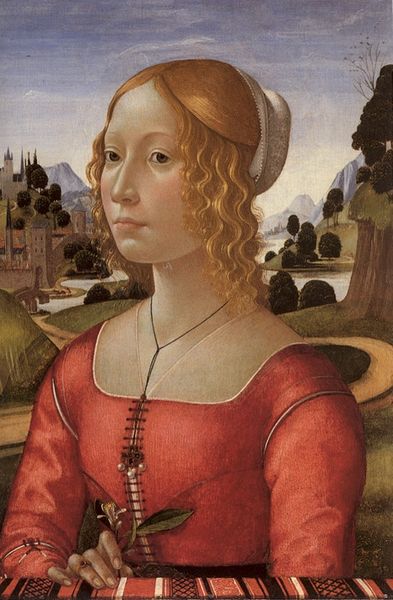
painting, oil-paint
#
portrait
#
painting
#
oil-paint
#
figuration
#
oil painting
#
italian-renaissance
Copyright: Public domain
Editor: This is Domenico Ghirlandaio's "Ludovica Tornabuoni," painted around 1490. It’s an oil painting currently located in Santa Maria Novella in Florence. It has such an air of solemnity, almost gravity. I'm curious, what do you see when you look at this piece? Curator: Primarily, I am drawn to the deliberate use of line and form. Notice the delicate contours defining Ludovica's profile, sharply juxtaposed against the softer textures of her garments. Observe also the architectonic division of the background: a patterned plane met by linear elements containing figural, almost grotesque embellishments. How do these divisions of space influence your perception of the subject? Editor: They give a feeling of constraint... or structure. It’s like she is both a part of and separate from this ornamental setting. Curator: Precisely! This duality informs the painting's semiotic complexity. Ghirlandaio employs geometrical structure to negotiate between flatness and depth, further reinforcing the idea that we’re viewing a constructed representation rather than raw reality. What’s your understanding of the way in which texture and color relate to these structural concerns? Editor: Well, the relative flatness seems to amplify texture; for instance, the ornamental pattern becomes foregrounded instead of disappearing into the background, so we become aware of artifice, right? The subdued colors contribute, I think, to its rather grave effect. Curator: An astute observation. In this carefully calibrated composition, the artist balances meticulous detailing and calculated artificiality. Such structural formalism, mediated through line and colour, ultimately generates an experience of restrained elegance. Editor: I never thought of portraiture having such levels of self-reference, but it seems very evident now. Curator: Indeed. Recognizing such formal devices illuminates how artistic intention shapes our perception.
Comments
No comments
Be the first to comment and join the conversation on the ultimate creative platform.
